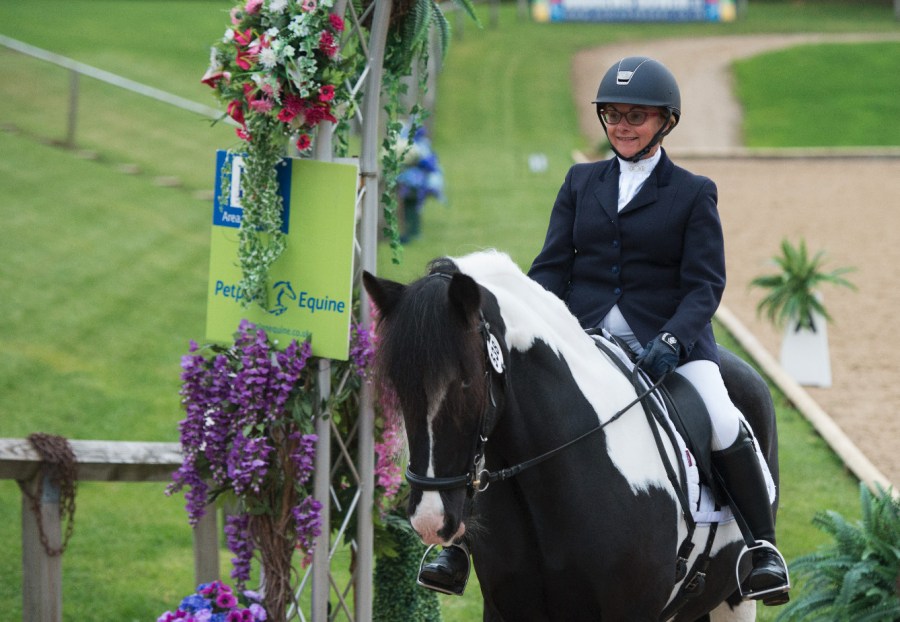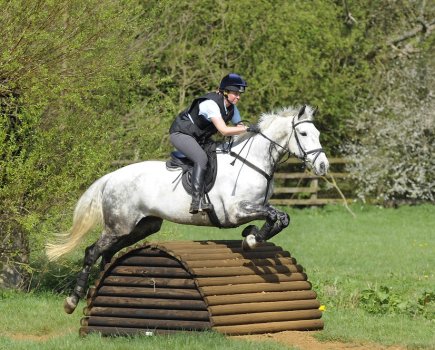In partnership with Petplan Equine
Have you made the step up to novice level dressage, but aren’t sure what the judges are looking for? Or perhaps you’ve ridden a few tests but feel like you’re missing out on marks? International dressage rider, List 1 judge and Level 4 coach Harry Payne is here to help.
In the video below, Harry Payne takes a look at Clare and her Irish Sport Horse Doonaveeragh Mountain to see what improvements they could make to reach the higher marks in the test Novice 23.
What went well
There was plenty of positives to take away from the test, as Harry noted in the video.
“The test was a very obedient and relaxed,” says Harry. “The paces were perfectly correct in their quality and in their rhythm.”
There were a few things to work on to help reach those higher marks.
Improvements to make
1. Think about your entrance
Harry advises that preparation is key for a perfect entrance up the centre line.
“I’m seeing a fairly straight and active trot coming around the outside but I’d like to see the rider prepare a little bit more for that turn onto the centre line,” explains Harry. “She needs to look ahead a little earlier and really get control of the right shoulder in the turn so the horse is absolutely straight.”
To perfect your entry at A, check out this helpful guide of what judges are looking for when you enter the arena.
2. Ride the right size circle
It’s an easy mistake to make, especially if you’re used to riding in a different sized arena at home, but the wrong size circle is a costly mistake to make in a dressage test.
“She lost a couple of points for riding [the 15m circle] too big,” says Harry. “The circle is more balanced towards the left side of the arena than the other side which has lead to it being too large.”
Remember, 15m circles shouldn’t touch the sides of the arena – you should ride 2.5m in from the side of the arena on both sides.
“A quick gain for the rider would to be more accurate through the 15m circles,” says Harry. “There’s definitely more marks to be had there with more accurate riding.”
3. Keep the canter forward
Dropping back into trot before the correct marker will see you lose points.
“He gets a bit behind the leg and takes a couple of trot strides, which is quite an expensive mistake to make,” says Harry. “A little bit more impulsion, a little bit more connection through the short side so that he’s really in a balanced position to ride forward positively will help get those canter strides more elastic.”
4. Use your corners
When it comes to extending the pace, make the most of the corners to set your horse up for success.
“The medium canter strides would be easier to capitalise on if she’d ridden a better corner,” explains Harry. “At the start, use that corner to really get the horse with a little more engagement and get those hind legs underneath a bit more in a place to ride him forwards. Then it would be easier to open the stride up and keep straighter.”
Homework to make improvements
“If I was taking this combination forwards, I would be looking to do a lot of transitions within circles and transitions within the pace to teach the horse to engage a little bit more through his core to be able to take those handles into an easier place to push himself forward and develop more elasticity,” says Harry. “Particularly in the trot and canter; this would open up the high marks within the medium strides.”
Check out our Christmas subscription offer – the perfect gift for a horse lover!









